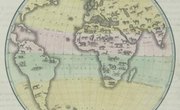The Aztec Empire, which experienced its golden age between the mid-14th to early 16th century, ruled over vast portions of what is today Mexico. Although the expansion of their empire was cut short by the violent Spanish colonial invasion led by Hernán Cortés in 1519, the legacy of the Aztecs still strongly resonates today throughout Mexico. This legacy includes the survival of Nahuatl, an American Indian language still spoken today throughout the country.
12th-13th Century
The Aztecs most likely migrated into the Valley of Mexico sometime during the early 12th century. Aztec lore reports the Aztecs, then a nomadic group, left their homeland of Aztlan and settled in the Valley of Mexico, only to eventually flee from a war waged against the Culhuacán people. As prophesied, the sign that would end their search for a home was the sighting of an eagle standing on a cactus. This happened in the marshes of Lake Texcoco, which is where the Aztecs eventually settled.
14th Century
It was in the 14th century when the Aztec Empire became more established and expanded its power. Their famed capital Tenochtitlan, which eventually became Mexico City, was established in 1325. Acamapichitli became the city's first king, as reiterated in the “Codex Azcatitlan.” The construction of the Templo Mayor in Tenochtitlan also began in the first quarter of the 14th century and was subsequently expanded throughout the century. Standing 90 feet tall, the main temple was the Aztec Empire's sacred center of ceremonial life.
15th Century
Throughout the 15th century, the Aztec Empire conquered surrounding areas, including the Azcapotzlco, one of the two dominant states in the region. Between 1428 and 1430, and prior to the conquering of Azcapotzlco, a “Triple Alliance” was formed among three cities: Tecnochtitlan, Texcoco and Tlacopan. It was this Triple Alliance that eventually defeated Azcapotzalco. Although power was supposed to be shared equally shared among these three groups, Tenochtitlan eventually arose to be the most dominant, as it also became the alliance’s main capital. The Aztec empire became a formidable power under Montezuma I, who led territorial expansion during the empire’s golden age.
Defeat: 1519-1521
The expansion of the Aztec Empire came to a startling halt during the first quarter of the 16th century, with the arrival of the Spanish conquistadors led by Hernán Cortés. Cortés and the Spanish eventually defeated Montezuma II – the ninth and last king of the Aztecs – and the Aztec Empire, making Mexico a Spanish territory. The first contact between the Spanish forces and the Aztecs was made in 1519, and by the end of 1520, the empire was all but defeated; Cortés' troops would have complete control of the area by 1521.
Related Articles
References
- Britannica: Aztec
- Britannica: Nahuatl Language
- Britannica: Tenochtitlan
- Aztec History and Culture; Helen Dwyer and Mary Stout
- Lost Cities and Ancient Mysteries of the Southerwest; David Hatcher Childress
- Factional Competition and Political Development in the New World; edited by Elizabeth M. Brumfiel, John W. Fox
- The Metropolitan Museum of Art: Tenochtitlan: Templo Mayor
- Aztec Imperial Strategies; ed. by Frances Berdan
- Britannica: Hernan Cortes, marques del Valle de Oaxaca
Resources
Writer Bio
Jason Cristiano Ramon holds a doctorate in political science and a master's degree in philosophy. He has taught political science in China.











